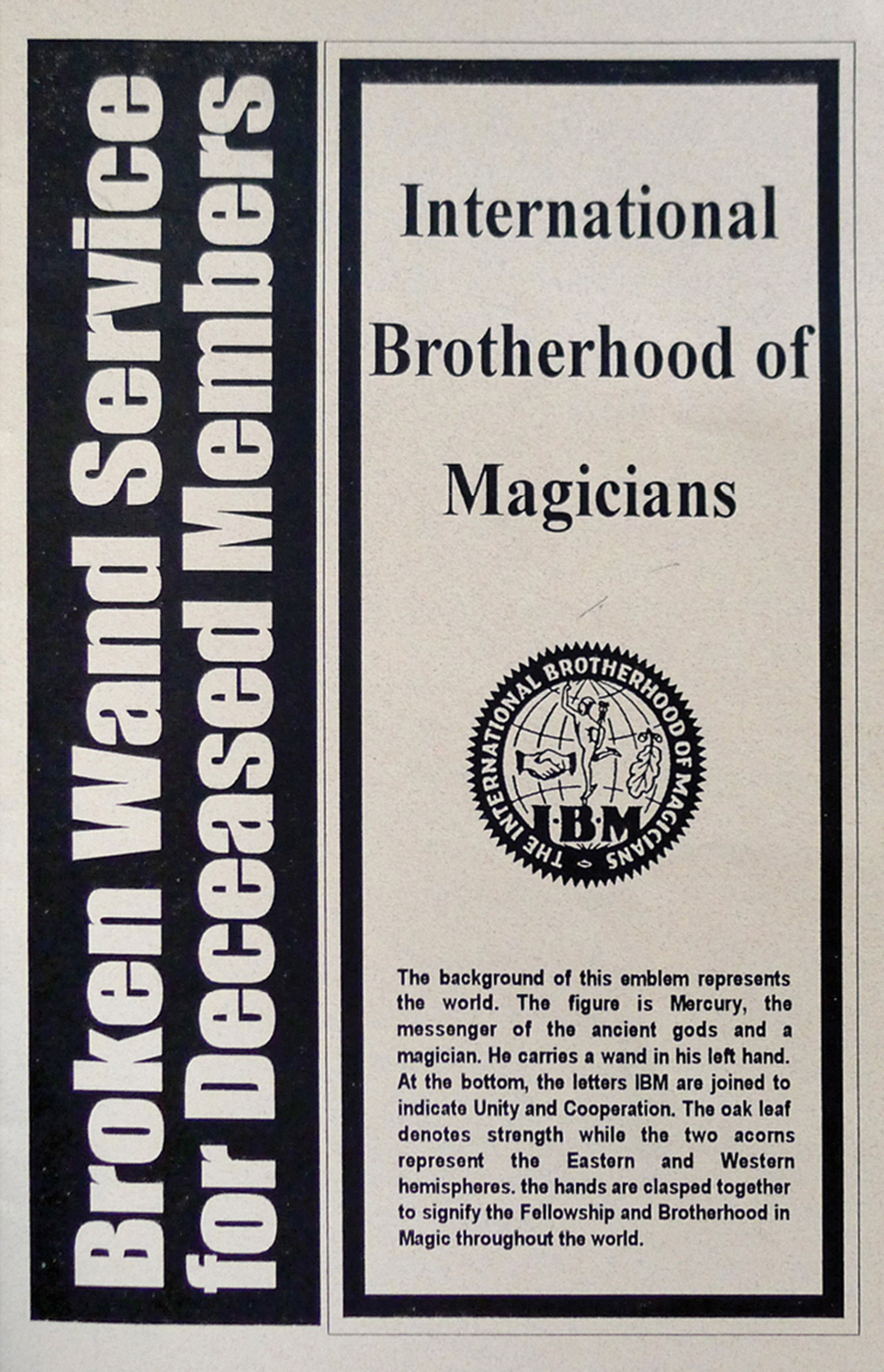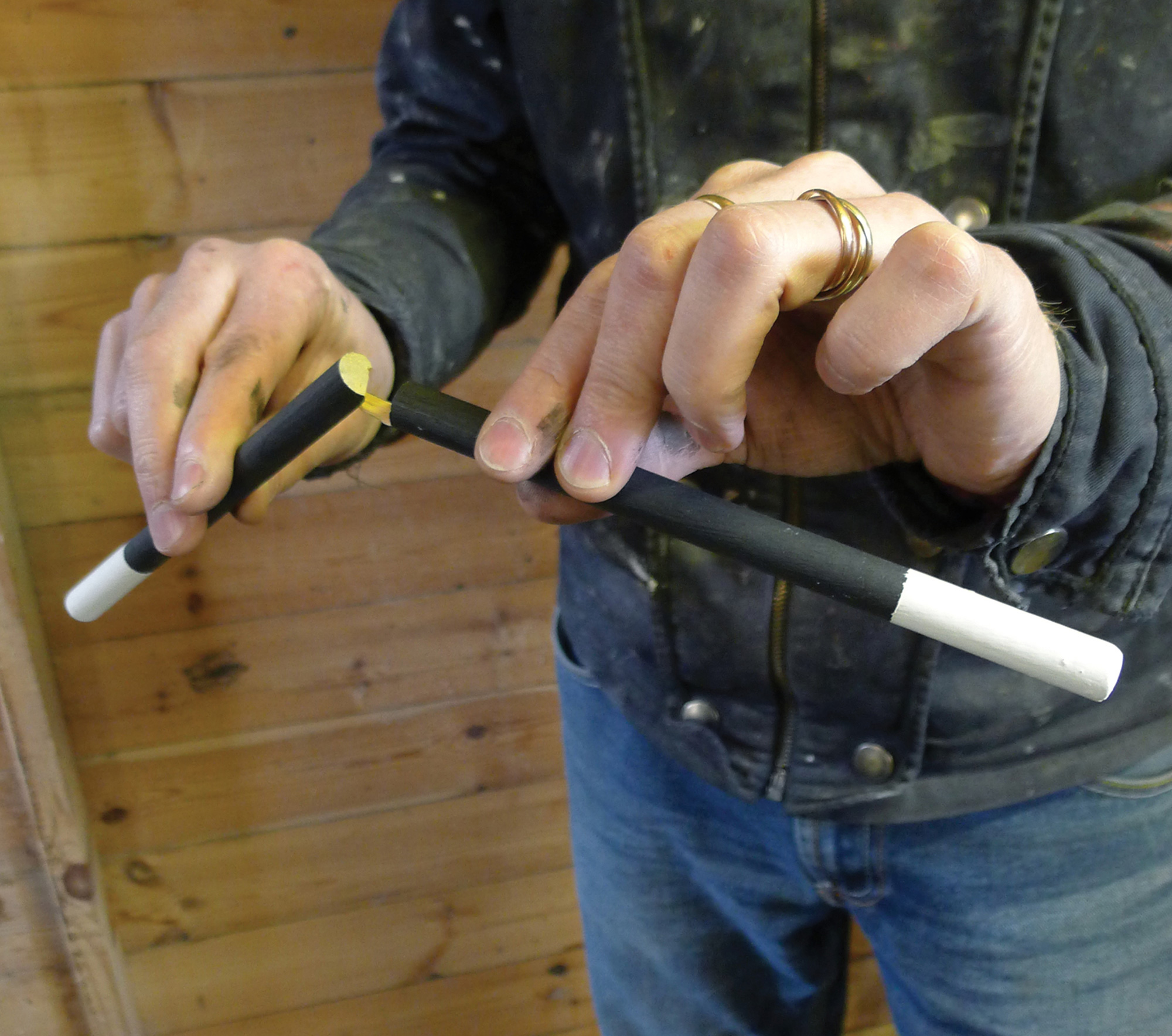Where No Trickery Abounds
The Broken Wand Service for deceased magicians
Jonathan Allen
Have I made shake and by the spurs pluck’d up
The pine and cedar: graves at my command
Have waked their sleepers, oped, and let ‘em forth
By my so potent art. But this rough magic
I here abjure, and, when I have required
Some heavenly music, which even now I do,
To work mine end upon their senses that
This airy charm is for, I’ll break my staff,
Bury it certain fadoms in the earth,
And deeper than did ever plummet sound
I’ll drown my book.
—William Shakespeare, The Tempest
In the final act of The Tempest, the aging magus Prospero unexpectedly renounces the “rough magic” that has propelled the play’s narrative of revenge by vowing to “drown” his books, and break and bury his magical staff. Scholars have long pondered this surprising volte-face. Why at the very height of his power does the magician suddenly turn his back on its source? In what sense is Prospero’s magic “rough”? Is the sorcerer’s abjuration of his “potent art” in fact an expression of Shakespeare’s own desire to retire from playhouse life? Despite much controversy over such questions, most commentators do agree on at least one thing: Prospero’s self-absorption with magic, whether benignly theurgic or malignly goetic, has impoverished the sorcerer by removing him from the mundane concerns of shared humanity. Once Prospero begins to empathize with the suffering of his enemies, and finally forgives them, his reliance on magic diminishes.


Another “staff” broken in recognition of the human limitations of magic is the conjuror’s wand often employed during the funeral services of theatrical magicians. The modern origins of the so-called broken wand ceremony date from 1926, when Harry Houdini’s wand was broken following his burial in New York’s Machpelah Cemetery; members of the Society of American Magicians (SAM), an organization of which Houdini was president, reenact this event each year by his graveside. Its wider legacy, in the form of a simple observance that can be used at the graveside of any conjuror, was shaped initially by SAM and developed more recently by the world’s largest organization dedicated to the magic arts, the International Brotherhood of Magicians (IBM).

The wand broken during this contemporary ceremony is usually a symbolic surrogate rather than one used by the deceased performer during his or her lifetime. Given that the item must be instantly recognizable as a conjuror’s wand to a potentially diverse congregation of well-wishers, a traditional black-and-white version is recommended, custom-made with one important detail: a half-diameter saw-cut midway along its shaft so that the break, when attempted, is not clumsy or unachievable. The current version of the manual titled Broken Wand Service for Deceased Members was written in 1995 by the magician, author, and former IBM chaplain Reverend Canon William V. Rauscher. Rauscher’s text hybridizes mainstream Christian theology with an epic hermeticism reminiscent of The Tempest. Echoing Prospero’s “rough magic,” mourners are encouraged to reflect upon the “imperfect mysteries and illusions” of the deceased that merely imitate “a higher magic unfathomed by mortal man,” and to anticipate a day when they might encounter the departed magician once again “in fellowship where no trickery abounds.” (A non-theist version of the service is also available.)